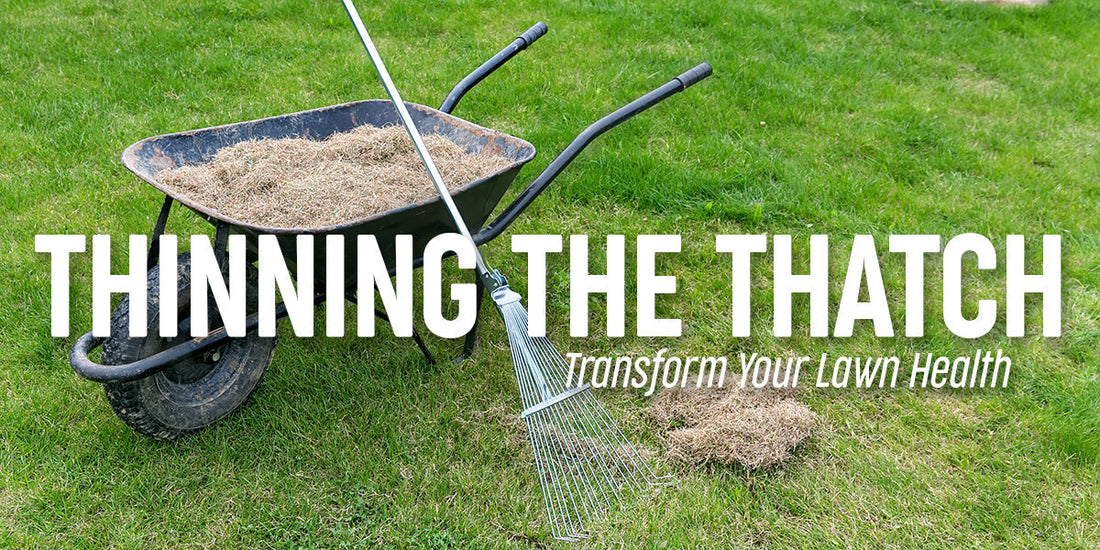
How Thinning The Thatch Can Transform Your Lawn Health
Share
At SimplyGro, we understand the importance of maintaining a lush, healthy lawn. One key aspect of lawn care is managing thatch, the layer of organic material—including grass clippings, leaves, sticks, pine needles, and roots—that accumulates between the soil surface and the living grass.
A thin layer of thatch (about half an inch) is beneficial, helping to regulate soil temperature and moisture. However, excessive thatch (more than ¾ of an inch) can suffocate the lawn, promote disease, and hinder healthy grass growth, especially when it becomes compacted.
To assess your lawn’s thatch layer, use a soil probe or simply cut out a small section of your turf with a shovel and measure the thickness of the thatch. If it exceeds ¾ of an inch, it’s time to thin it out.
How to Dethatch Your Lawn: The right dethatching tool depends on the thickness of the thatch and the size of your yard. For light thatch (under ½ inch), a standard leaf rake or landscaper’s rake should be enough to lift loose debris. If the thatch layer is moderate, a thatching rake with curved tines can effectively comb through the lawn to remove excess material. For thick thatch (over 1 inch), mechanical tools like a power rake or verticutter work best. These machines, resembling push mowers, have vertical tines or blades that penetrate deeper into the thatch layer, making them ideal for severe buildup of around 2 inches or more. These tools can be rented from garden centers or home improvement stores, and professional lawn care services also offer dethatching as part of their maintenance packages.
When to Dethatch Your Lawn: Dethatching should be done when grass is actively growing to minimize stress on your lawn. For cool-season grasses like fescue and bluegrass, late summer to early fall is the ideal time. Warm-season grasses such as Bermuda and zoysia should be dethatched after spring cleanup when growth is vigorous. Avoid dethatching during dormancy, as this can lead to excessive damage and hinder recovery.
Maintaining a balanced thatch layer promotes a healthier lawn by allowing nutrients, water, and air to reach the soil more effectively. Keeping thatch in check is a natural and essential way to achieve a beautiful, chemical-free lawn.
